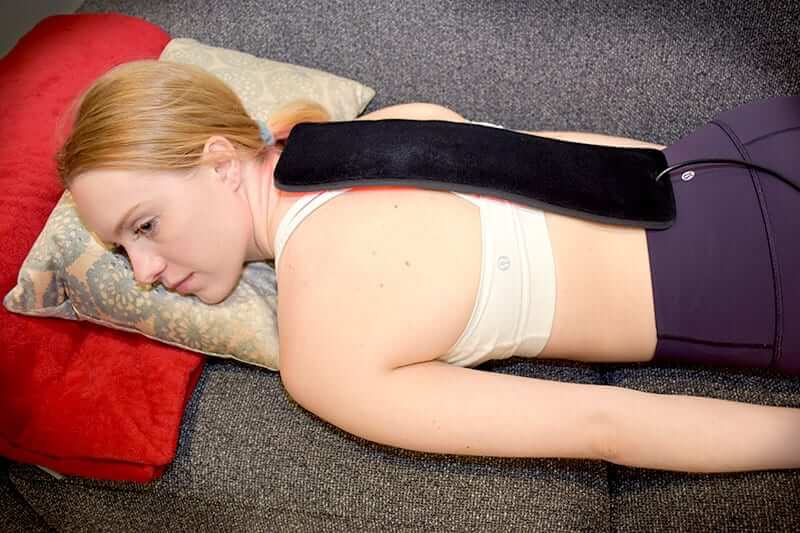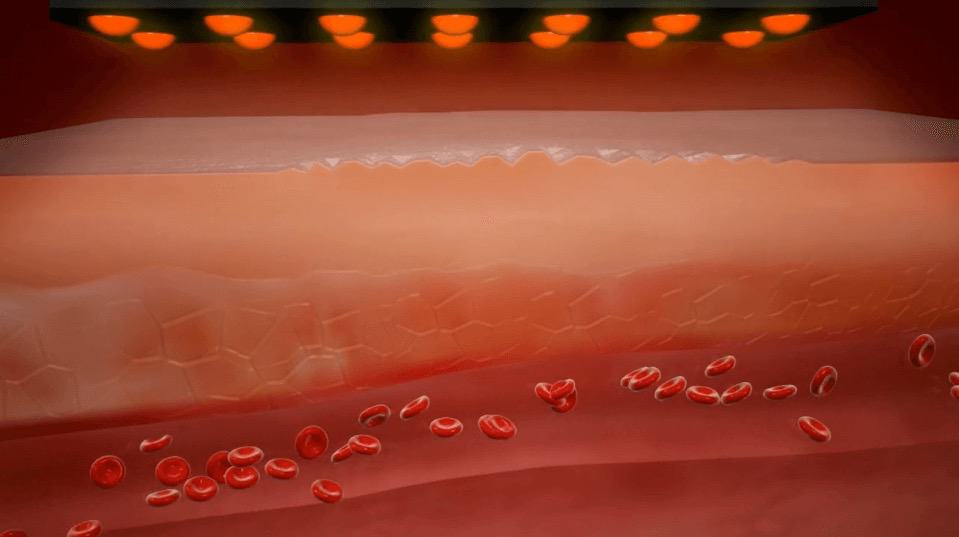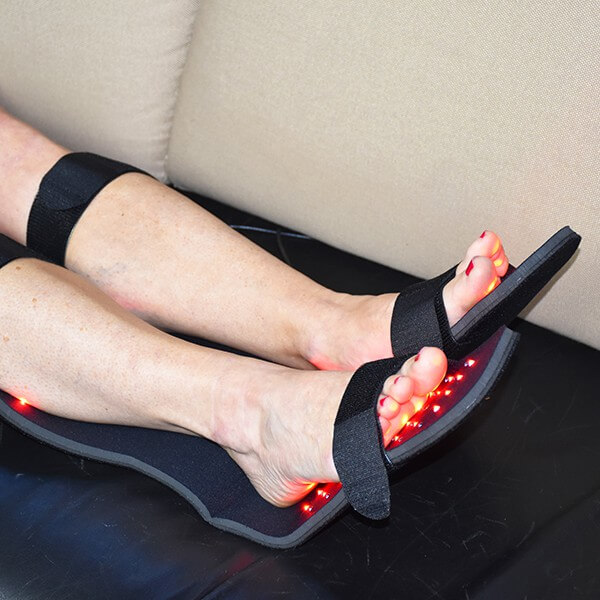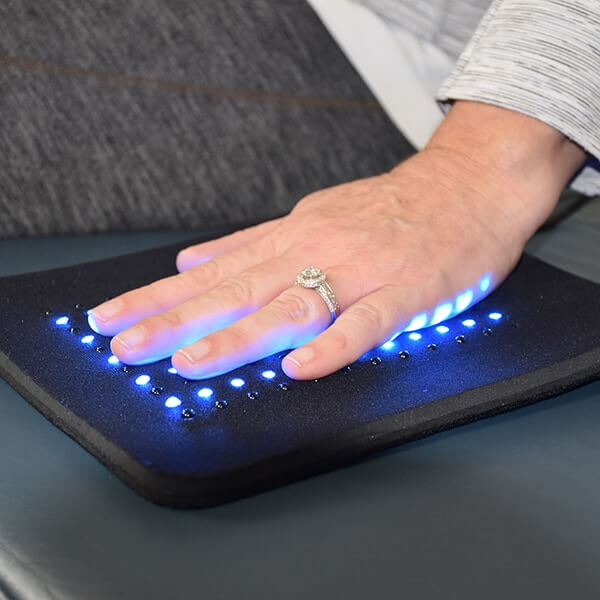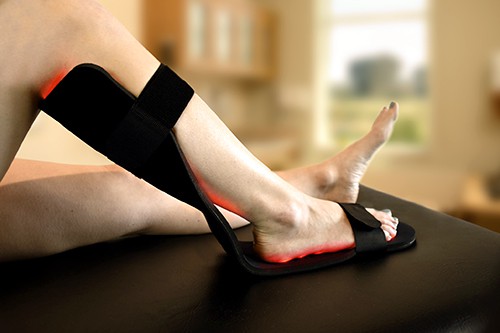Medically reviewed by Karen Wolters, RN.
A Chronic Pain Phototherapy Treatment Program for Chiropractors
When it comes to treating chronic pain, specifically chronic musculoskeletal pain, modern medicine’s standard procedures are fraught with a wide spectrum of side effects, possible complications, and overall risks. “Currently accepted therapies consist of non-steroidal anti-inflammatory drugs, steroid injections, opiate pain medications and surgery, each of which carries their own specific risk profiles.”[1]
But more and more people suffering from chronic musculoskeletal pain are becoming wary of these treatments advocated by allopathic medicine, especially taking opiates or undergoing surgery. They are opting instead for a more natural and non-invasive approach such .
And this presents a great opportunity for chiropractors to offer treatment programs for the chronic pain patient.
A Multidisciplinary Approach
In order to stand out above the increasing competition, and at the same time provide faster and more effective pain relief to patients, more and more chiropractic clinics are taking a multidisciplinary, comprehensive approach to treating chronic pain, integrating several modalities into one program.
Many years ago, Mark Shelley, DC DACNB, founder and director of Olympic Spine and Sports Therapy in Edmonds, Washington, realized during his search for effective treatment for his own injuries that in order to recover to the fullest degree possible, he needed the expertise of several healing modalities. As a result of his success with this approach, he developed one of the first multidisciplinary injury rehabilitation clinics in the greater Puget Sound area. His clinic currently combines chiropractic care, spinal decompression, massage therapy, physical rehabilitation, and phototherapy treatments such as laser therapy, and NIR (invisible near-infrared and visible red light) Therapy to achieve faster and more complete results for his patients, most of whom have peripheral neuropathy and chronic spine conditions.
Brian McKay DC, owner of Core Health in Darien, Connecticut, has a similar story. “I had a bad back for probably two years. Chiropractic alone was not enough to get it better. So I ended up seeking out other therapies. I learned about lasers; Light Therapy; EMS (electrical muscle stimulation); and ATM2 (Active Therapeutic Movement). I started to find what works. After a while, I did start getting better by using these additional therapies.” Today Dr. McKay’s clinic utilizes all of these therapies in addition to chiropractic care. His clinic also offers massage, physical therapy, and spinal decompression to give his patients “the most thorough non-surgical back pain program possible.”
NIR Light Therapy for Chiropractic Treatment
Although you may not be able to nor wish to put as many alternative healing modalities on your treatment menu as do Dr. Shelley or Dr. McKay, there is one modality that both doctors utilize that will serve as a strong foundation for any chronic pain program: NIR (near infra-red/red Light) Therapy, also known as low-level light therapy (“LLLT”), both laser and LED (light emitting diode).
If you had to choose only one alternative healing modality to introduce into your practice that would bring the fastest, the most effective, and the most cost effective results to your chronic pain patients, Near Infrared Therapy might be your best choice. In short, LLLT “is a rapidly growing alternative approach to many medical conditions that require relief from pain and inflammation, stimulation of healing, and prevention of tissue death after injury or infarction.”[8]
Dr. Shelley describes NIR/LLLT Therapy as “a powerful tool” and “one of the treatments that I would say is most beneficial. If it’s neuromusculoskeletal pain, then Light Therapy is one of my go-to’s.” He is a firm believer in NIR Therapy, revealing that “Almost every night I use Light Therapy for my own issues. I have my own unit at home, and it gets used all the time.”
Strong Scientific Evidence
Dr. McKay brought red light therapy into his clinic because “There’s a lot of science behind it. And that is what attracted me. The science really made sense. It was easy to do, easy to explain, and easy to implement. It was a good part to add to my program.”
According to clinical research, “For over forty years, low level laser (light) therapy (LLLT) and LED (light emitting diode) therapy (also known as photobiomodulation) has been shown to reduce inflammation and edema, induce analgesia, and promote healing in a range of musculoskeletal pathologies.”[9] And furthermore, “According to the more than 4000 studies on pub.med.gov, it can be concluded that the majority of laboratory and clinical studies have demonstrated that LLLT has a positive effect on acute and chronic musculoskeletal pain.”[10]
Medical-grade LED Light Therapy devices have received FDA-clearances for temporarily increasing local circulation; and for the temporary relief of pain, stiffness, and muscle spasms.
Triggers Beneficial Chemical Changes
NIR Therapy produces a beneficial photochemical reaction within the cells of the body in a process called “photobiomodulation,” or “PBM” for short. Simply put, the light induces a cascade of biochemical changes within the cells, similar to how photosynthesis operates in plants. “Although the exact mechanism of its effect is still unknown, it seems beyond dispute that LLLT induces a variety of stimulating processes at the cellular level affecting cell repair mechanisms, the vascular system and lymphatic system.” [11]
Like chiropractic, LED Light Therapy supports the body’s innate healing abilities. “Low doses of light have demonstrated the ability to heal skin, nerves, tendons, cartilage and bones.”[12] When LED Light Therapy is “applied to an injury or a painful site for 30-60 seconds a few times a week for several weeks, the result is a reduction of inflammation, pain relief, and accelerated tissue regeneration.”[13] But in order to be effective, LED Light Therapy devices must generate light that has a very specific range of intensity and wavelengths. “The wavelengths of light used for LLLT fall into an ‘optical window’ at red and NIR wavelengths (600–1070 nm).”[14] This is because penetration of skin and soft and hard tissues is maximized in this range.
Light Therapy can be used on every external area of the body except the eyes, has no known negative side effects, and generally, no contraindications, except for use over a developing fetus or an active cancer. However, under a doctor’s supervision, LLLT can provide palliative relief for cancer patients.
Biography
Rob Berman is a partner at Energia Medical, LLC a national distributor of red light therapy pads and controllers. He helps healthcare providers improve patient outcomes while increasing provider income He has held a variety of sales and marketing during his career, which include building and managing a marketing department, directing product development and product management for multiple organizations, and serving as a general manager for a variety of business units. Rob can be contacted by phone at 860-707-4220 or by e-mail at rob@energiamedical.com. Energia Medical’s website is www.energiamedical.com.
Sources
[1] Cotler, Howard B. et al. The Use of Low Level Laser Therapy (LLLT) For Musculoskeletal Pain. MOJ Orthop Rheumatol.
2015 ; 2(5): . doi:10.15406/mojor.2015.02.00068, p. 1.
[8] Hamblin, M. Can Osteoarthritis Be Treated With Light? Arthritis Research & Therapy. 2013, 15:120, p.1.
[9] Cotler, Howard B. et al. The Use of Low Level Laser Therapy (LLLT) For Musculoskeletal Pain. MOJ Orthop Rheumatol.
2015 ; 2(5): . doi:10.15406/mojor.2015.02.00068, p. 1.
[10] Ibid., p. 6.
[11] Baltzer, AWA., et al. Low level laser therapy : A narrative literature review on the efficacy in the treatment of rheumatic orthopaedic conditions. Z Rheumatol. 2017 Nov;76(9):806-812. doi: 10.1007/s00393-017-0309-1, p. 1. [PubMed: 28466181]
[12] Cotler, Howard B. et al. The Use of Low Level Laser Therapy (LLLT) For Musculoskeletal Pain. MOJ Orthop Rheumatol.
2015 ; 2(5): . doi:10.15406/mojor.2015.02.00068, p. 4.
[13] Ibid., p. 3.
[14] Chung, Hoon, et al. The Nuts and Bolts of Low-level Laser (Light) Therapy. Ann Biomed Eng. 2012 February; 40(2): 516–533. doi:10.1007/s10439-011-0454-7, p. 6 of NIH Public Access version.
[15] Cotler, Howard B. et al. The Use of Low Level Laser Therapy (LLLT) For Musculoskeletal Pain. MOJ Orthop Rheumatol.
2015 ; 2(5): . doi:10.15406/mojor.2015.02.00068, p. 7.
[16] Ibid., p. 6.
[17] Ibid., p. 5.
[18] Chung, Hoon, et al. The Nuts and Bolts of Low-level Laser (Light) Therapy. Ann Biomed Eng. 2012 February; 40(2): 516–533. doi:10.1007/s10439-011-0454-7, p. 9 of NIH Public Access version.
[19] Baltzer, AWA., et al. Low level laser therapy : A narrative literature review on the efficacy in the treatment of rheumatic orthopaedic conditions. Z Rheumatol. 2017 Nov;76(9):806-812. doi: 10.1007/s00393-017-0309-1, p. 2. [PubMed: 28466181]
[20]Cotler, Howard B. et al. The Use of Low Level Laser Therapy (LLLT) For Musculoskeletal Pain. MOJ Orthop Rheumatol.
2015 ; 2(5): . doi:10.15406/mojor.2015.02.00068, p. 4.
Start Your Pain Relief Journey Today
Contact us now and speak with a light therapy expert. They are here to help you find relief at home with soothing red light therapy.
